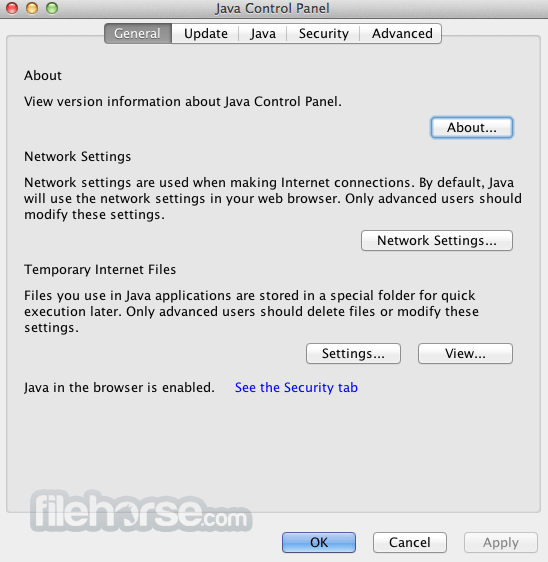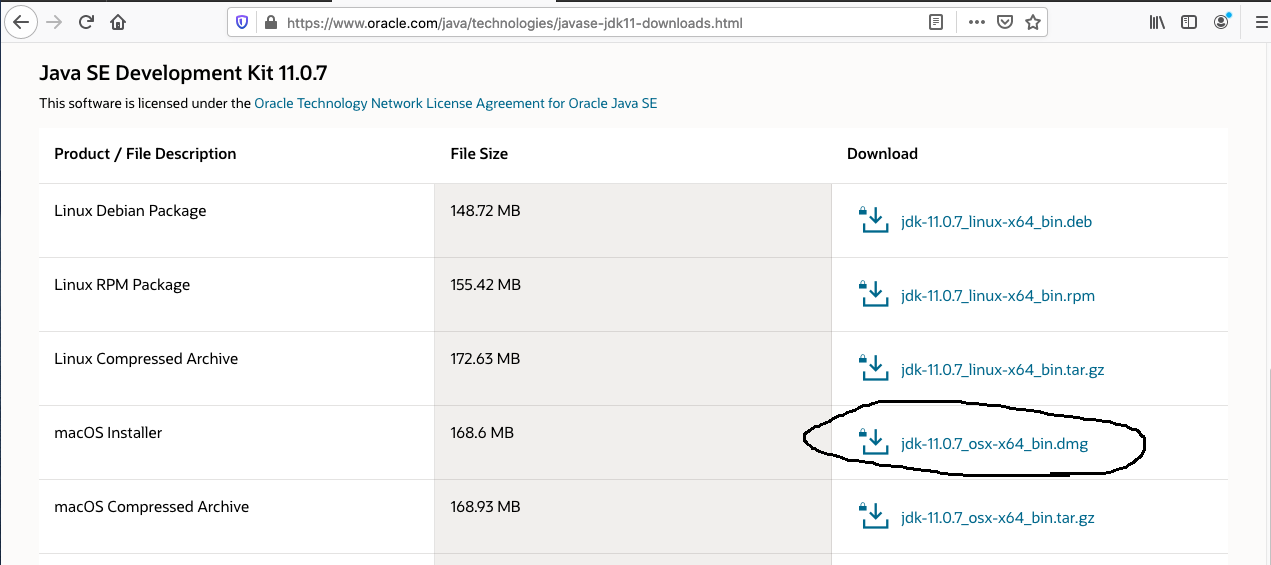

- Install java for mac sierra how to#
- Install java for mac sierra install#
- Install java for mac sierra update#
- Install java for mac sierra upgrade#
- Install java for mac sierra full#
Install java for mac sierra install#
And from then on, say "no" if ever asked to install Java. Matthew Dornquast of Code42 Software told me that the only SAFE way to remove all vestiges of Java 6 is to conduct a clean install of 10.8.

Or an Adobe installer may have done it.Īfter a Java 6 installation, there is a large collection of Java files is deeply embedded into OS X, and, unlike the simple plug-in for the browser, it's not easy to uninstall all those files. Or perhaps you installed Java 6 in order to run an older version of GoToMeeting. On such a Mac, if you enter "java -version" you'll get a prompt inviting you to install Java 6, like this: That will stop any Java application cold in is tracks from running.
Install java for mac sierra upgrade#
From looking at my two Macs, it appears that the upgrade removed the directory/folder: /System/Library/Java/JavaVirtualMachines. If you upgraded a Snow Leopard Mac to Lion and/or Mountain Lion, I believe that the install process suppressed Java 6 without a complete uninstall. If you bought a new Mac with Lion or Mountain Lion pre-installed, Java 6 is not there.
Install java for mac sierra how to#
I'll get to how to disable that Java install further down. If you've kept your system up to date with Apple Software updates, and you open a terminal window and type "java -version" (without the quotes), you should see this:įig 5. Up through OS X 10.6, Snow Leopard*, Apple provided Java 6 pre-installed, and they still maintain it.
Install java for mac sierra full#
It shows you the version of Apple's full Java 6 package for development and native apps. They know they upgraded the applet plug-in for the browser, but the terminal command "java -version" doesn't refer to the plug-in. (However, Oracle seems ready to stop issuing those updates for non-corporate users.) Apple, not Oracle, still maintains Java 6 for OS X based on patches provided by Oracle. Java 6 is a full-fledged development system that allows developers to write and you run full Java applications such as CrashPlan or jEdit. Java browser plug-in up to date and working properly.ĭepending on the history of your Mac, you may still have Java 1.6 (or "Java 6" in Java-speak) installed for both development and native Java applications. (Safari and Firefox may respond slightly differently.) Only if your plug-in is up to date, enabled and working properly, will you see this: Oracle has assumed responsibility for the Java applet plug-in since then.įinally, you can test whether your Java plug-in has been disabled by going to Oracle's Java applet test page.
Install java for mac sierra update#
Most of the security issues reported so far relate to this Java applet plug-in for browsers because it is the vehicle through which maliciously crafted websites work.Īpple stopped providing its own Java browser plug-in in October, 2012 and a subsequent Software Update deleted it. But that would make it harder to easily re-enable the plug-in if you ever need it. You can do that your self by using "Show Package Contents" on the plug-in.Īlternatively, to be really safe, you could delete the file: "ugin" in /Library/Internet Plug-ins. I showed this command not to be geeky but to reveal the structure of Oracle's Java applet plug-in. > /Library/Internet\ Plug-Ins/ugin/Contents/Home/bin/java -version You can also dig down into the plug-in with the terminal app and extract the version number. Uncheck the box circled below and restart your browser.īy the way, you can verify which version is installed by looking at the Java tab and select "View." The best way to block the applet plug-in in /Library/Internet Plug-ins for both Safari and Firefox browsers is to disable it in the Java Preference Pane.


That leaves Safari and Firefox as the remaining major Mac browsers. Java 7 won't run in Chrome because Chrome is 32-bit and Java 7 is 64-bit. You need to do that yourself under the Update tab.įig 2. It will auto-detect that a new version is available, but it will not do the installation. That Preference Pane manages the Oracle Java 7 browser plug-in for applets. The file is "ugin" and has the icon shown on the left.Īlso, when you installed Oracle's Java 7 browser plug-in, you installed a Preference Pane in System Preferences under "Other." If you, because of recent security alerts, upgraded that plug-in to Java 1.7 (or "Java 7" in Java-speak) from Oracle, you'll find the plug-in in /Library/Internet Plug-ins. Oracle now maintains that plug-in for Mac users. Many Mac users retain the ability to run Java applets in their browser with a browser plug-in. It also looks at the differences between Java 6 and Java 7. This how-to discusses procedures to uninstall/disable both the plug-in ahd the full Java system. With the grave security concerns about Java these days, you may be thinking about how to remove or disable both of those Java systems completely from your Mac. The second is to run native Java apps on your Mac. The first is to run Java applets inside your Web browser with a plug-in.


 0 kommentar(er)
0 kommentar(er)
